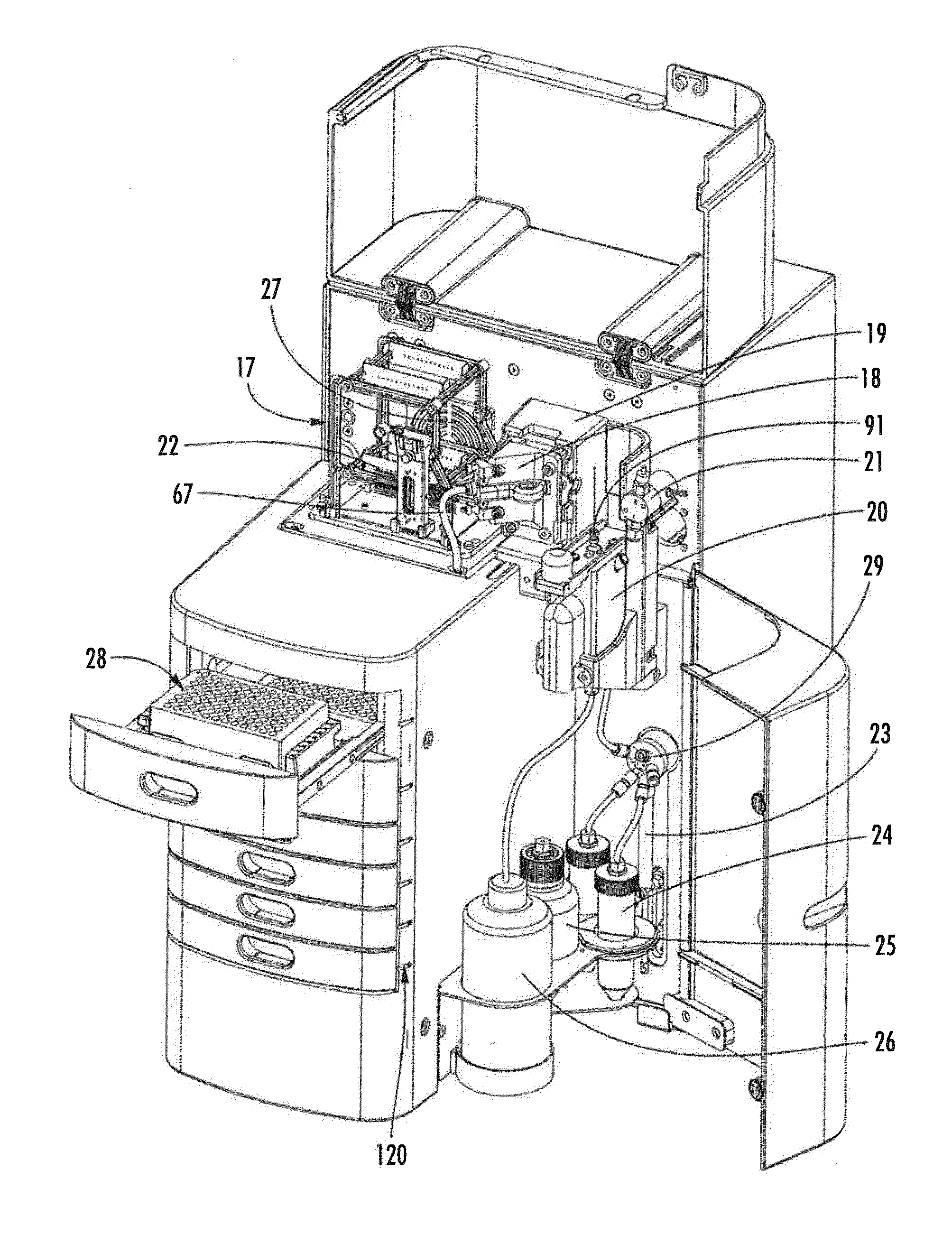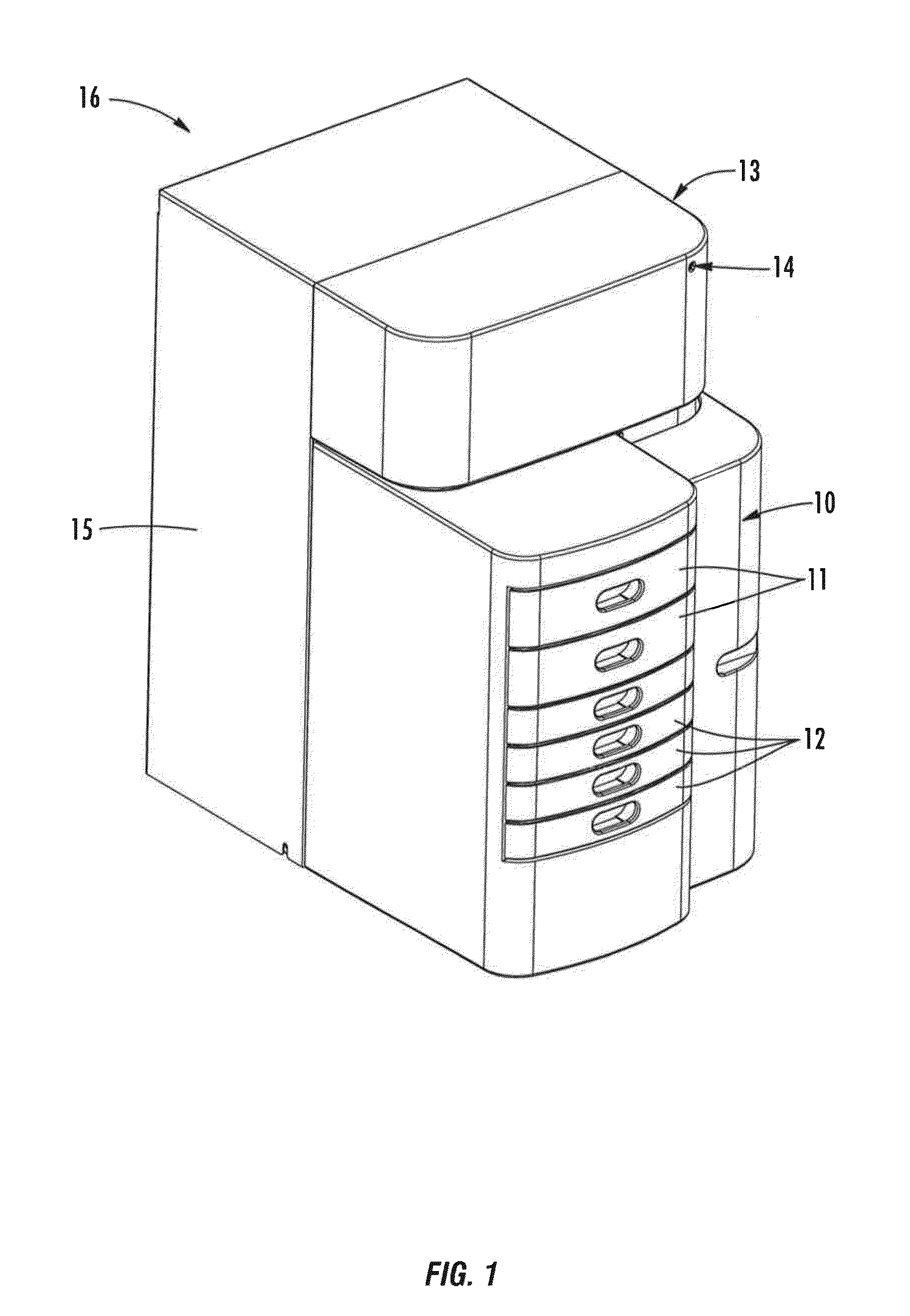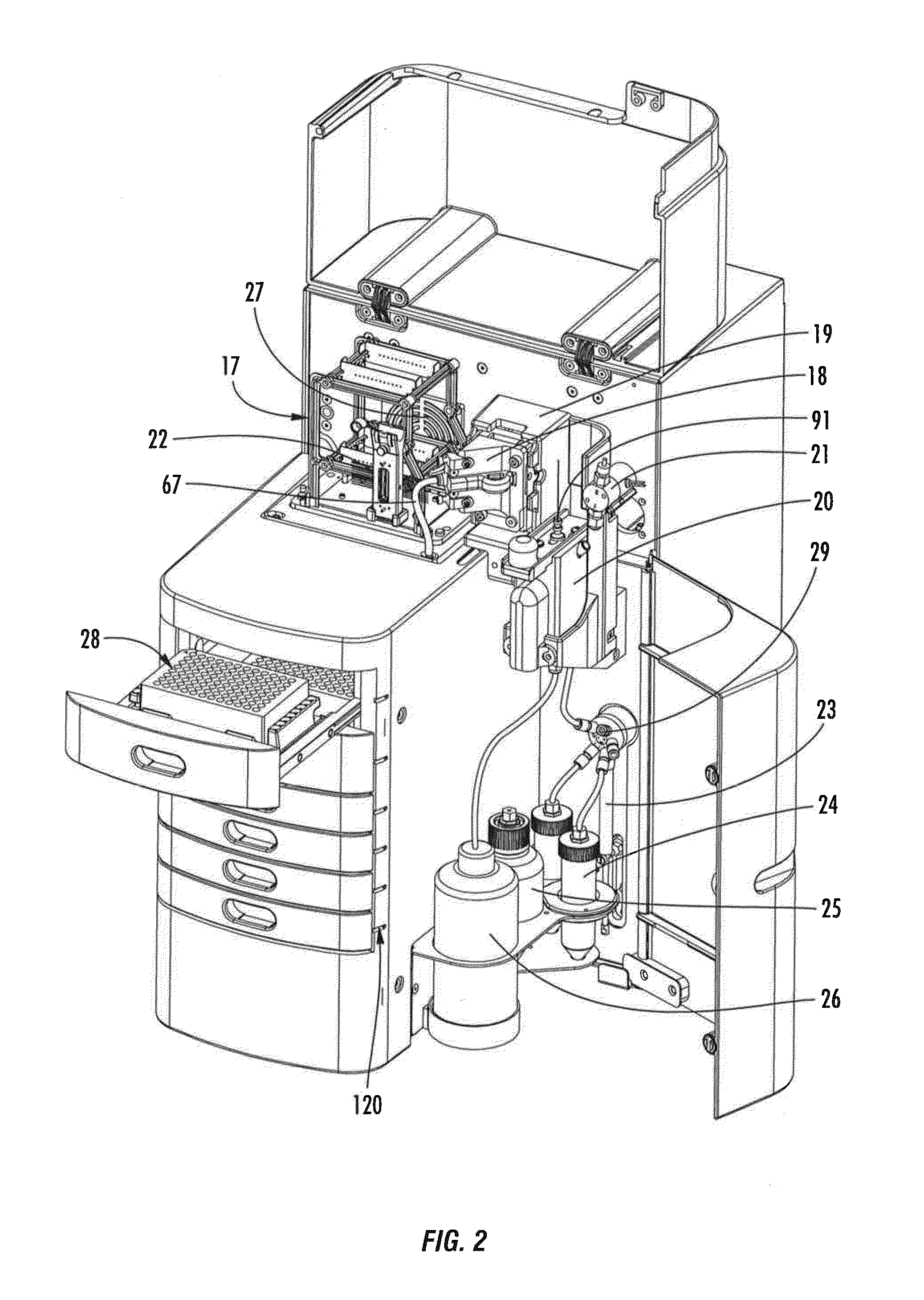Pulse-field multiplex capillary electrophoresis system
a pulsed-field capillary electrophoresis and pulse-field multiplex technology, applied in the field of pulse-field multiplex capillary electrophoresis systems, can solve the problems of inability to accurately quantify dna, labor-intensive agarose gel electrophoresis, and inability to use agarose gel electrophoresis for accurate quantification, etc., to achieve the effect of accurate measuremen
- Summary
- Abstract
- Description
- Claims
- Application Information
AI Technical Summary
Benefits of technology
Problems solved by technology
Method used
Image
Examples
example 1
[0080]A pulse-field capillary electrophoresis gel “930 Gel” (available from Advanced Analytical Technology) was used for this example. The “930 Gel” sieving matrix was pumped into a plurality twelve capillaries with an effective length of 22 cm and a total length of 40 cm (50 um I.D.) using the capillary electrophoresis system described in this specification. A 7GT DNA sizing ladder (Available from Wako Chemical Company) comprised of DNA fragments with sizes of 10.06 kB, 17.7 kB, 21.2 kB, 23.45 kB, 41.77 kB, 50.31 kB, and 165.65 kB (FIG. 16A) was used to evaluate separation efficiency on a capillary electrophoresis system. A sample of 150 pg / uL of the 7GT ladder in 1×TE Buffer was prepared as a sample for analysis. The gel-filled capillaries were treated with an electrophoresis pre-run by applying 2.0 kV for 1 second prior to injection of sample. The 7GT ladder sample was injected onto the capillary electrophoresis system (present invention) using an electrokinetic injection of 5 kV...
PUM
 Login to View More
Login to View More Abstract
Description
Claims
Application Information
 Login to View More
Login to View More - R&D
- Intellectual Property
- Life Sciences
- Materials
- Tech Scout
- Unparalleled Data Quality
- Higher Quality Content
- 60% Fewer Hallucinations
Browse by: Latest US Patents, China's latest patents, Technical Efficacy Thesaurus, Application Domain, Technology Topic, Popular Technical Reports.
© 2025 PatSnap. All rights reserved.Legal|Privacy policy|Modern Slavery Act Transparency Statement|Sitemap|About US| Contact US: help@patsnap.com



